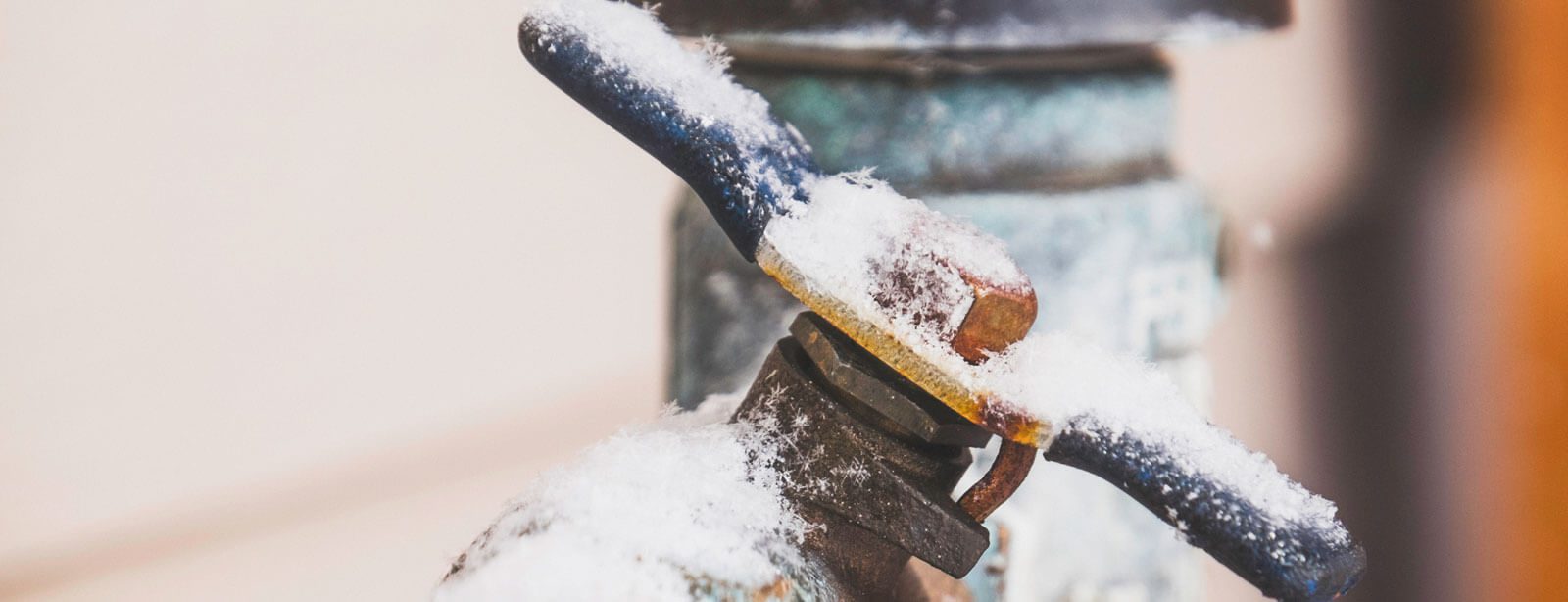Protecting Against Frozen Plumbing in Winter: Critical Strategies
Protecting Against Frozen Plumbing in Winter: Critical Strategies
Blog Article
What are your ideas regarding How to prepare your home plumbing for winter weather?
:strip_icc()/snow-outdoor-faucet-pipes-4af65d1e5e904fb1aa7bf74071fe5d89.jpg)
Cold weather can damage your plumbing, especially by freezing pipes. Here's how to prevent it from happening and what to do if it does.
Introduction
As temperature levels decline, the danger of frozen pipes boosts, potentially resulting in costly fixings and water damages. Comprehending how to stop frozen pipelines is critical for homeowners in cool environments.
Prevention Tips
Shielding vulnerable pipes
Wrap pipelines in insulation sleeves or use warmth tape to shield them from freezing temperatures. Concentrate on pipelines in unheated or exterior areas of the home.
Home heating techniques
Maintain interior rooms adequately heated up, especially locations with plumbing. Open up closet doors to allow cozy air to distribute around pipelines under sinks.
How to recognize icy pipelines
Try to find reduced water circulation from faucets, unusual smells or sounds from pipelines, and noticeable frost on subjected pipes.
Long-Term Solutions
Architectural adjustments
Take into consideration rerouting pipelines away from exterior wall surfaces or unheated locations. Add extra insulation to attics, basements, and crawl spaces.
Upgrading insulation
Invest in high-quality insulation for pipes, attics, and walls. Correct insulation aids keep consistent temperatures and reduces the threat of icy pipelines.
Securing Exterior Pipes
Garden pipes and outdoor faucets
Separate and drain yard pipes before winter season. Install frost-proof faucets or cover outside faucets with shielded caps.
Comprehending Frozen Pipelines
What triggers pipelines to ice up?
Pipes ice up when subjected to temperature levels below 32 ° F (0 ° C) for expanded periods. As water inside the pipelines freezes, it expands, putting pressure on the pipeline walls and possibly creating them to rupture.
Dangers and problems
Frozen pipelines can bring about supply of water interruptions, building damages, and costly repairs. Ruptured pipes can flooding homes and cause extensive structural damages.
Indications of Frozen Pipeline
Determining icy pipelines early can prevent them from rupturing.
What to Do If Your Pipes Freeze
Immediate actions to take
If you think frozen pipes, keep faucets open to eliminate stress as the ice thaws. Utilize a hairdryer or towels soaked in warm water to thaw pipelines gradually.
Final thought
Avoiding frozen pipelines calls for aggressive procedures and quick responses. By comprehending the causes, signs, and safety nets, house owners can protect their pipes during cold weather.
5 Ways to Prevent Frozen Pipes
Drain Outdoor Faucets and Disconnect Hoses
First, close the shut-off valve that controls the flow of water in the pipe to your outdoor faucet. Then, head outside to disconnect and drain your hose and open the outdoor faucet to allow the water to completely drain out of the line. Turn off the faucet when done. Finally, head back to the shut-off valve and drain the remaining water inside the pipe into a bucket or container. Additionally, if you have a home irrigation system, you should consider hiring an expert to clear the system of water each year.
Insulate Pipes
One of the best and most cost-effective methods for preventing frozen water pipes is to wrap your pipes with insulation. This is especially important for areas in your home that aren’t exposed to heat, such as an attic. We suggest using foam sleeves, which can typically be found at your local hardware store.
Keep Heat Running at 65
Your pipes are located inside your walls, and the temperature there is much colder than the rest of the house. To prevent your pipes from freezing, The Insurance Information Institute suggests that you keep your home heated to at least 65 degrees, even when traveling. You may want to invest in smart devices that can keep an eye on the temperature in your home while you’re away.
Leave Water Dripping
Moving water — even a small trickle — can prevent ice from forming inside your pipes. When freezing temps are imminent, start a drip of water from all faucets that serve exposed pipes. Leaving a few faucets running will also help relieve pressure inside the pipes and help prevent a rupture if the water inside freezes.
Open Cupboard Doors
Warm your kitchen and bathroom pipes by opening cupboards and vanities. You should also leave your interior doors ajar to help warm air circulate evenly throughout your home.

As a fervent person who reads on 6 Ways to Prevent Frozen Pipes, I imagined sharing that chunk was smart. Do you know somebody who is truly interested in the topic? Be sure share it. Thank you so much for taking the time to read it.
Call Today Report this page